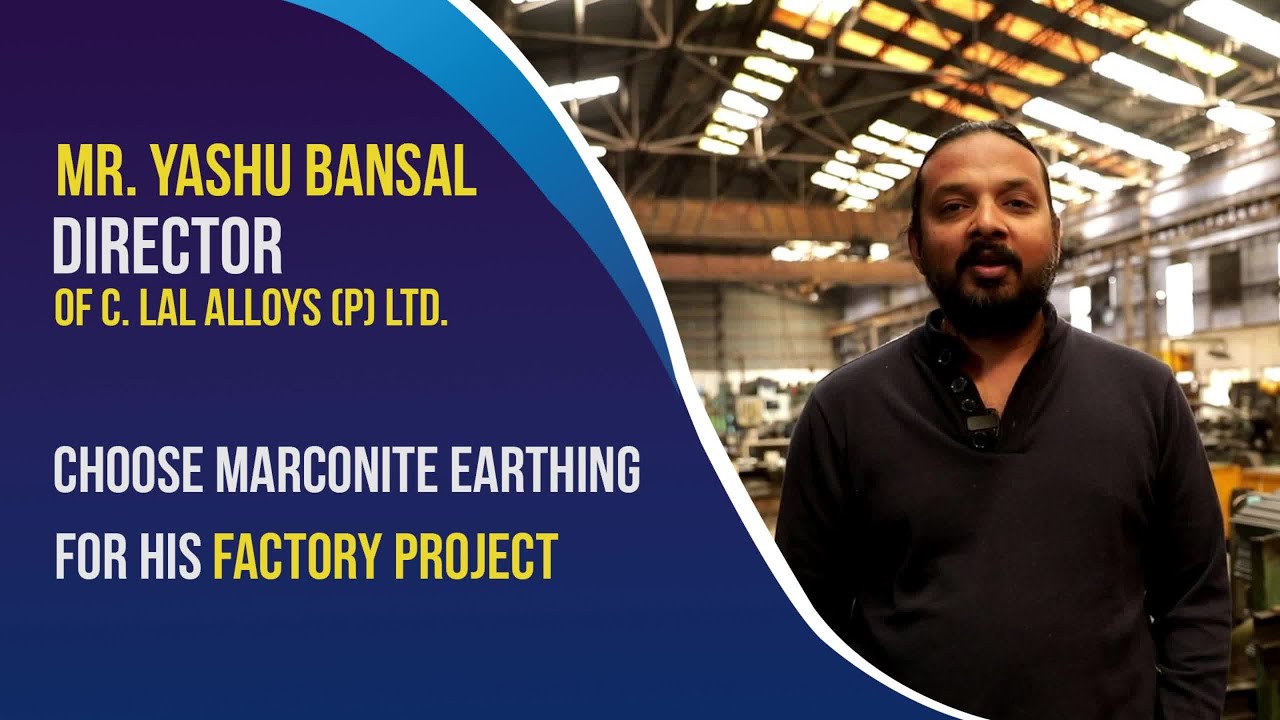Meaning of Earthing
Electrical earthing, or grounding, channels excess electric current safely into the earth due to issues like faults, noise, or surges from lightning or switching. An effective earthing system must handle various frequencies of current.
Earthing is the process of linking electrical systems and equipment to the ground to ensure safety and proper operation, which is why earthing is necessary.
It involves connecting the system to the Earth using grounding electrodes, like rods or plates, and conductive wires. This helps prevent electrical shocks and ensures the equipment functions correctly.
Why is Earthing necessary?
Earthing is necessary for electrical safety and system reliability. It safely channels excess current into the ground, preventing electric shocks and protecting equipment from damage.
By stabilizing voltage and controlling surges, earthing helps avoid electrical fires and ensures that electrical systems function correctly while complying with safety standards.

- Equipment Protection: It prevents damage to electrical devices by stabilizing voltage and controlling surges.
- Fire Prevention: By managing electrical surges, earthing helps avoid electrical fires and enhances overall safety.
- System Reliability: Ensures proper functioning of electrical systems by stabilizing voltage levels and reducing faults.
- Electrical safety: Earthing safely directs fault currents to ground, preventing electric shocks, equipment damage, and fire risks.
Earthing: Soil Compatibility
Different soil types affect electrical earthing. Earthing is effective in loamy and clayey soils but presents challenges in sandy and rocky conditions. Rocky soil requires specialized methods like conductive rods due to its low conductivity and uneven surface, making grounding particularly challenging and demanding specialized expertise.
Challenges of Earthing in Rocky Soil
Electrical earthing or grounding is challenging in rocky soil. The low conductivity and uneven surface of rocky soil make it difficult to achieve effective grounding. This often requires specialized techniques, such as using conductive rods or enhancing the soil’s conductivity, to ensure reliable performance and safety.
Earthing Challenges in Rocky Soil:
- Conductivity: Rocky soil has low conductivity, making grounding harder. Loamy and clayey soils, with better conductivity, allow for easier and more effective grounding.
- Surface Evenness: The uneven, irregular surface of rocky soil complicates the installation of grounding electrodes. In contrast, loamy or clayey soils offer a more even surface, making installation easier.
- Hardness: Rocky soil is much harder, making it difficult to drive electrodes into the ground. Softer soils like sand or clay are easier to work with and allow for easier electrode installation.
- Water Content: Rocky soil often lacks moisture, which can reduce conductivity. Soils with higher water content, like clayey soil, enhance grounding effectiveness.
- Salt Presence: Salt improves soil conductivity, but rocky soil usually has low natural salinity. In contrast, soils with higher salt content, like coastal areas, provide better grounding.
- Maintenance: Maintaining effective grounding in rocky soil is more challenging due to poor contact and stability. Other soil types usually provide better natural conditions for grounding and require less maintenance.
Types of Electrical Earthing in Rocky Soil
In rocky soils, electrical earthing or grounding can be more challenging due to the low conductivity of the soil and the physical characteristics of the rocks. Different methods are used to ensure effective earthing in such conditions:
- Ground Rods: Traditional grounding involves driving long copper or galvanized steel rods into the ground. In rocky soils, this can be tough, often requiring longer rods, special spacing, or extra equipment to overcome rock resistance. Even with these measures, achieving low resistance can be challenging if the rock obstructs the rod or if it hits hard layers.
- Ground Plates: This method involves burying large metal plates, usually copper or galvanized steel, in trenches. In rocky soil, you might need bigger plates to handle poor conductivity and shallower trenches where the soil is slightly better. However, digging these trenches in rocky conditions can be highly labour-intensive and expensive, and keeping the plates effectively can be difficult.
- Chemical Earthing: This method uses chemical compounds or rods to boost soil conductivity around earthing electrodes, lowering resistance. It is useful in tight spaces or difficult areas. However, it requires regular maintenance and replacement of the chemicals, as they degrade over time. Chemical earthing are bound to struggle in extremely rocky areas with limited soil.
- Bentonite Earthing: Bentonite clay improves soil conductivity around grounding electrodes. It’s useful in rocky or dry areas but needs regular replenishment, especially in dry climates. In highly fractured or rocky soils, keeping consistent contact between the clay and electrodes can be tough.
- Conductive Concrete This special concrete, mixed with conductive materials, enhances grounding in poor soil conditions. It can be costly and complex to install, and rocky soil can make excavation and mixing challenging. Proper contact and coverage are essential for effectiveness.
- Multiple Grounding Points: Using several earthing electrodes linked together helps reduce resistance. It requires ample space and can be difficult in rocky areas due to multiple installations and the need for reliable connections between electrodes.
- Grounding Rings: A conductive ring or wire buried in a trench provides a low-resistance path. While effective in rocky soils where rods may not work, installing it requires digging a trench, which can be difficult in rocky terrain, and maintaining low resistance can be challenging if the soil is uneven.
- Rock Anchors: For extremely rocky conditions, rock anchors or bolts can be used to secure the earthing electrode directly to the rock. These are installed using drilling and are designed to provide a solid connection to the grounding system. Drilling into rock for anchors can be expensive and requires specialized equipment.
Traditional earthing methods face challenges in rocky soils, including difficulties with installing ground rods and plates, maintaining chemical and bentonite earthing, and the complexities of conductive concrete and grounding rings. These methods can be expensive and less effective in tough conditions.
So, what is the best electrical earthing system for rocky soil?
Marconite Earthing for Rocky Soil
Marconite is a specialized conductive material composed of graphite and other substances, used in earthing systems to provide a highly conductive grounding medium. It addresses limitations of traditional grounding methods, particularly in challenging conditions such as rocky soils.
Here is an overview of how Marconite earthing overcomes the limitations of the methods mentioned above, highlighting its advantages of earthing.
Marconite – Advantages of Earthing in rocky soil
- Enhanced Conductivity: Overcoming Ground Rod Limitations – Marconite’s high conductivity can significantly improve the performance of earthing or grounding systems, even if ground rods are difficult to drive into rocky soils. It reduces the dependency on soil conductivity, which can be problematic with traditional rods.
- Easier Installation: Overcoming Ground Plates Limitations – Unlike large metal plates, Marconite earthing or grounding can be applied in various forms and does not require extensive excavation. This makes it easier to work in rocky conditions where trenching for plates is challenging.
- Long-Term Performance: Overcoming Chemical Earthing Limitations – Marconite does not degrade over time like chemical compounds, eliminating the need for periodic maintenance and replacement. It provides a stable, long-term grounding solution that is less affected by environmental changes.
- Consistent Effectiveness: Overcoming Bentonite Earthing Limitations – Marconite earthing or grounding maintains high conductivity regardless of soil moisture content or soil quality. It does not require replenishment, ensuring consistent performance even in dry or highly variable soil conditions.
- Reduced Complexity and Cost: Overcoming Conductive Concrete Limitations: Marconite earthing is less complex and costly compared to conductive concrete. It is easier to handle and install, reducing both installation and maintenance expenses. It can be applied directly without the need for specialized concrete mixtures.
- Flexible Application: Overcoming Multiple Grounding Points Limitations – Marconite earthing can be used to enhance the performance of multiple grounding points or electrodes by improving overall system conductivity. This flexibility helps in creating a more effective grounding network without the challenges of traditional multiple-point systems.
- Minimal Excavation Required: Overcoming Grounding Rings Limitations – With Marconite earthing, the need for extensive trenching and installation of grounding rings is reduced. It can be applied in smaller volumes and still achieve effective earthing or grounding, which is beneficial in rocky terrain.
- Adaptability to Rock Conditions: Overcoming Rock Anchors Limitations – Marconite earthing or grounding can be used in conjunction with rock anchors or directly applied in rock crevices. It adapts to the presence of rock, offering a practical solution where traditional anchoring methods may be cumbersome or ineffective.
Conclusion
Earthing or grounding in rocky soil is a tough challenge due to its low conductivity and uneven surface. Traditional methods often fall short, requiring complex and costly solutions.
Marconite earthing, however, offers a game-changing alternative. Its high conductivity, ease of installation, and minimal maintenance make it ideal for rocky conditions.
By overcoming the limitations of traditional methods, Marconite earthing ensures safe, reliable, and efficient grounding, even in the most challenging environments, making it the best solution for earthing in rocky soil.






